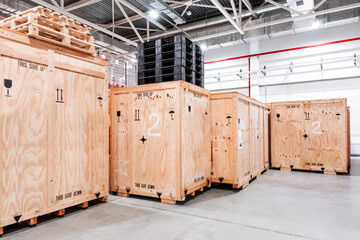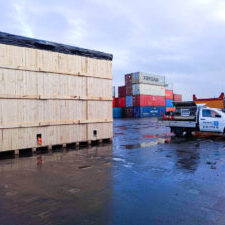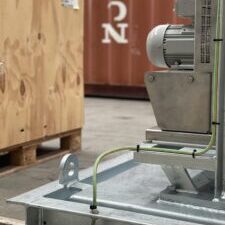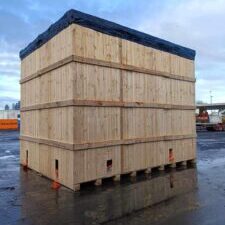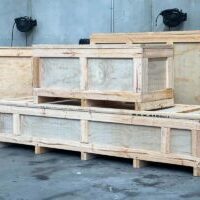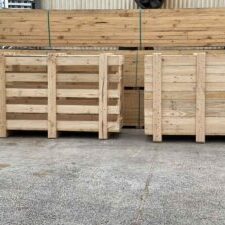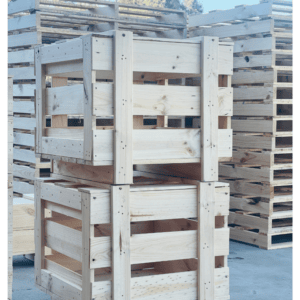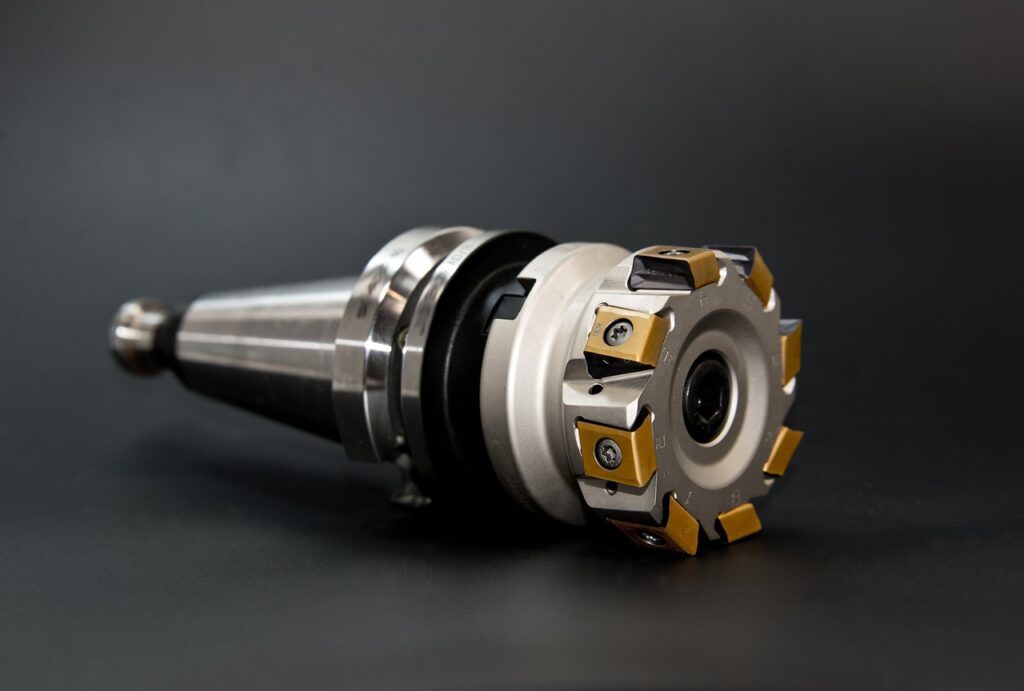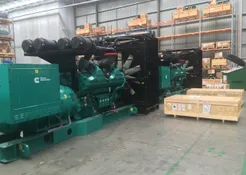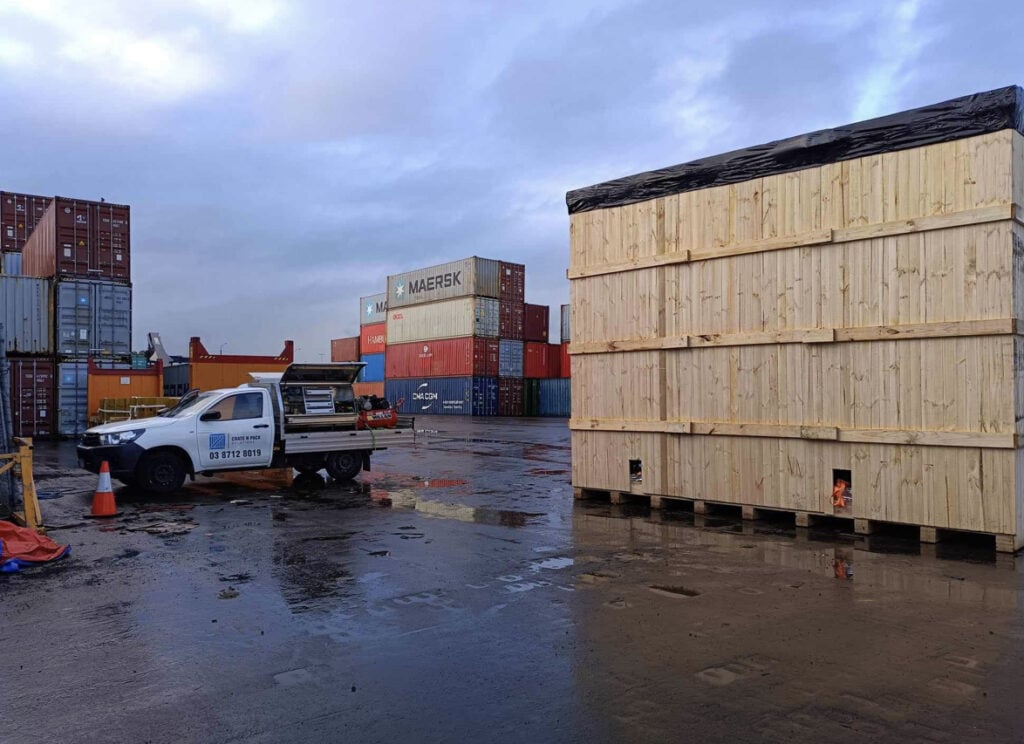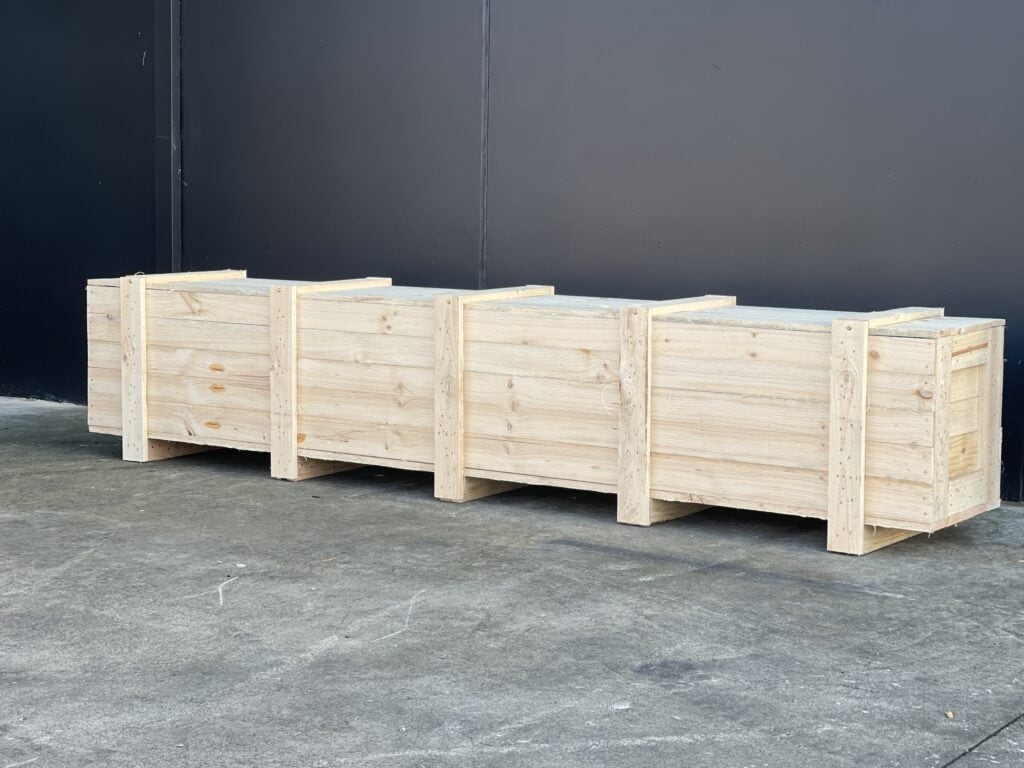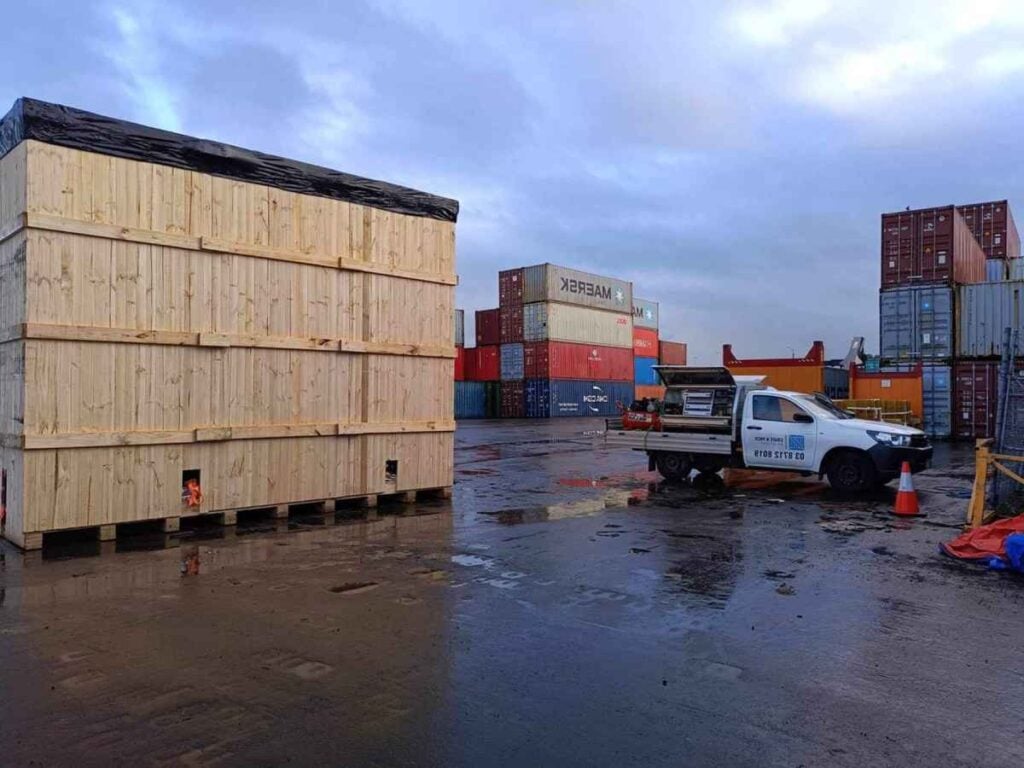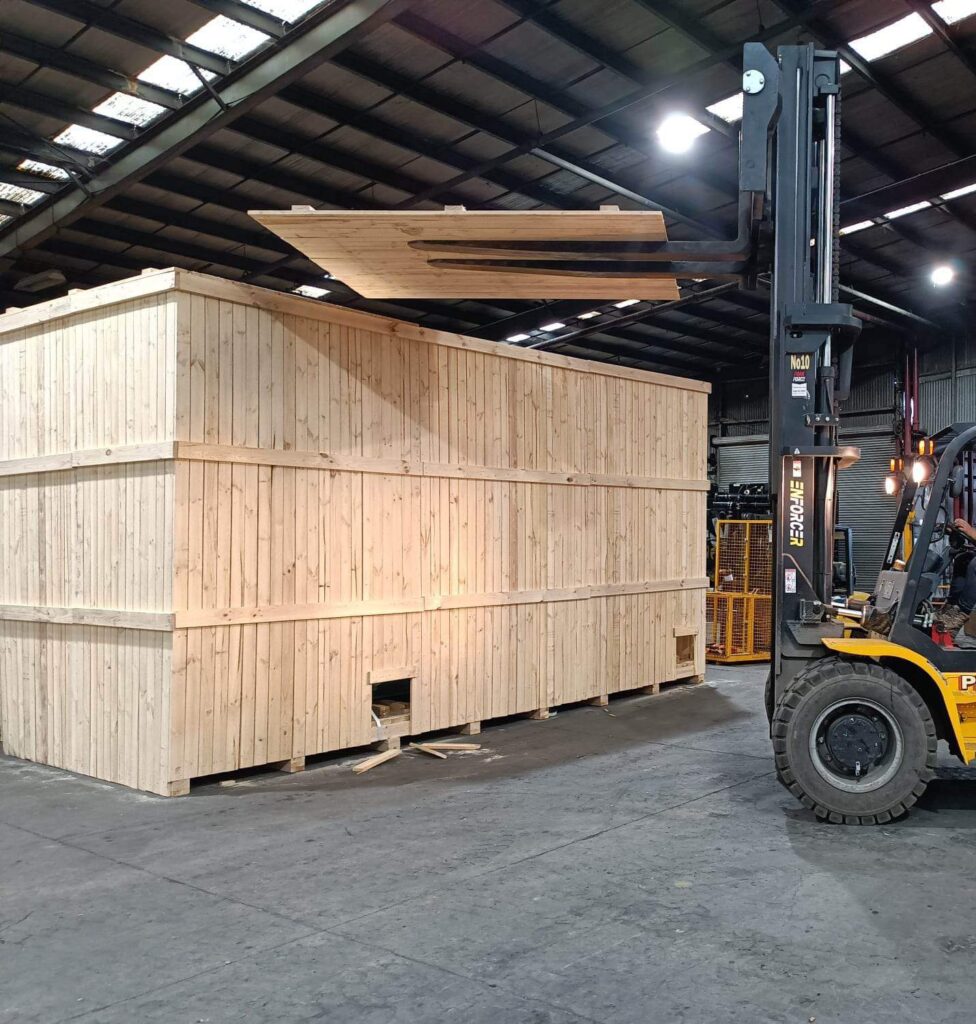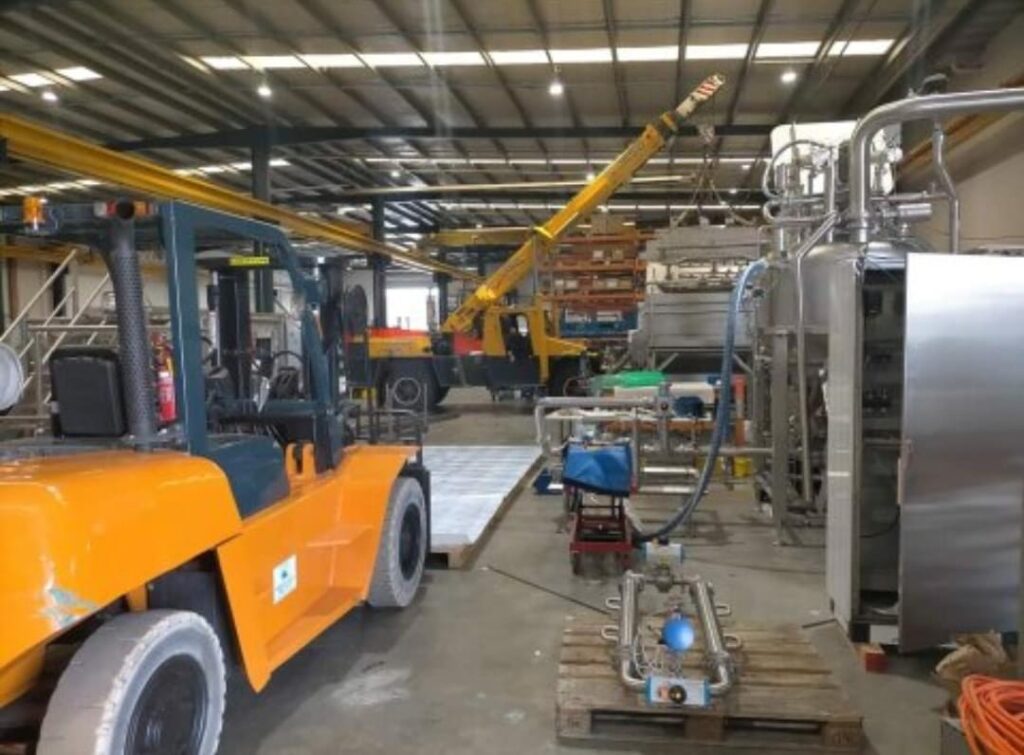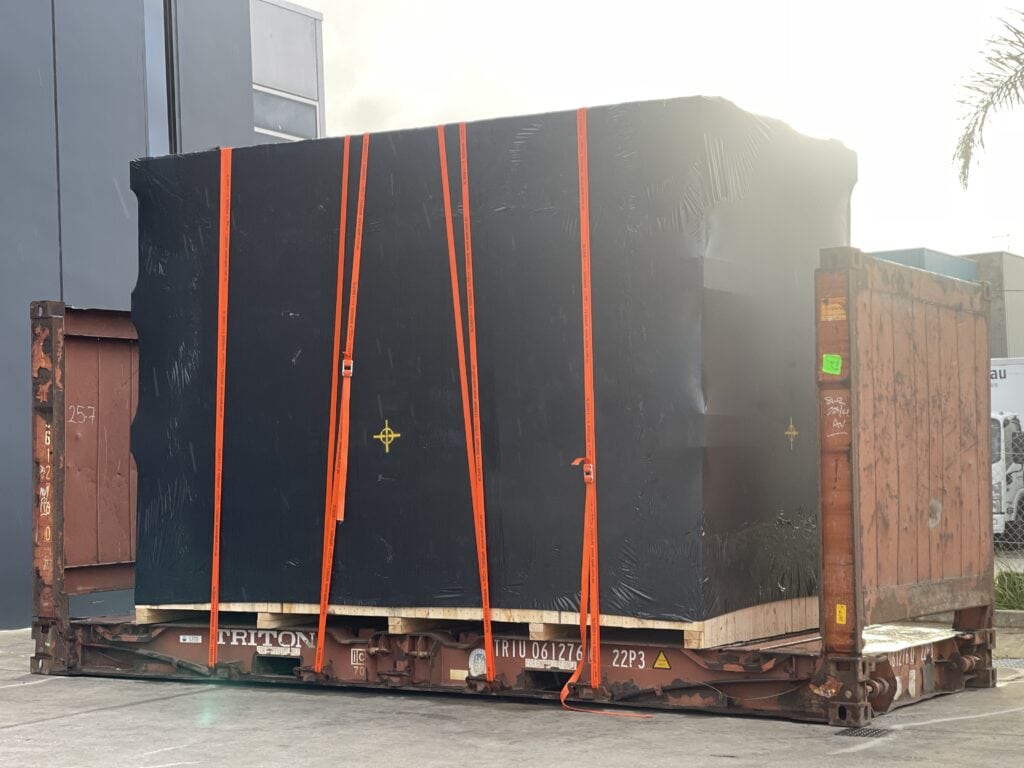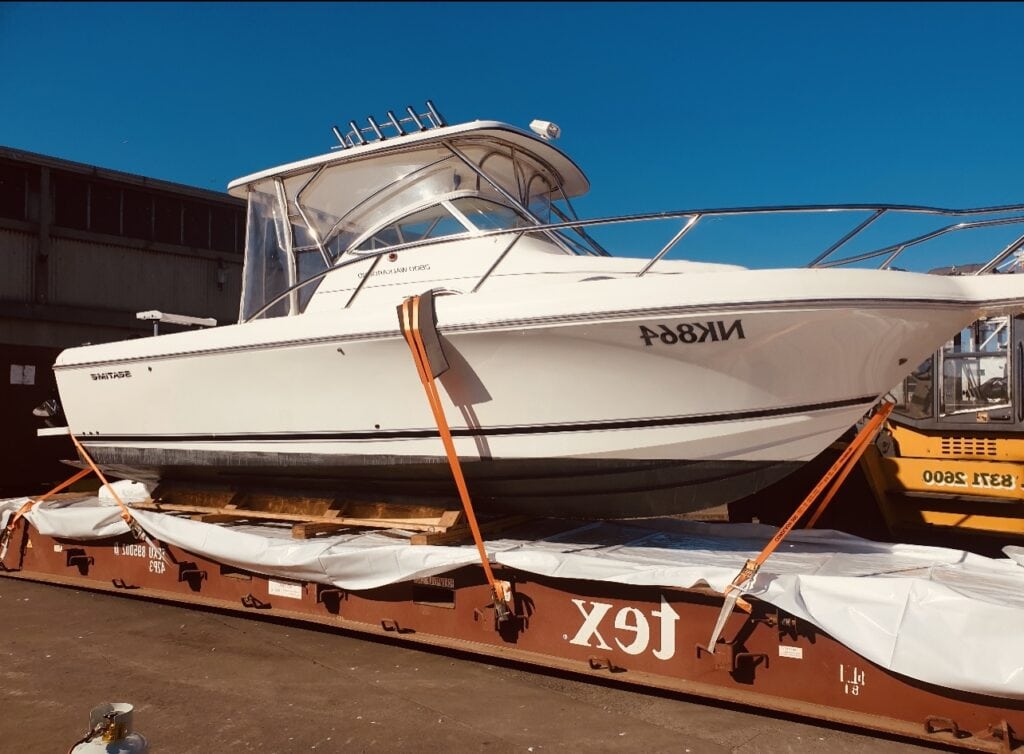The Art Of Crating - How to Pack, Protect, and Ship Your Valuables Safely with Crate N Pack Solutions
Are you planning to move or ship your valuable items? If so, you'll want to master the art of crating. Packing, protecting, and shipping your valuables safely requires a careful approach to minimize the risk of damage or loss. In this article, we will guide you through the ins and outs of crating, ensuring that your treasured possessions arrive at their destination unscathed.
Whether you are shipping delicate artwork, fragile antiques, or expensive electronics, understanding the proper techniques and materials is essential. We will walk you through the step-by-step process of selecting the right crate, packing your items securely, and protecting them from any potential hazards during transportation.
At Crate n Pack Solutions, we understand the importance of safeguarding your valuables throughout the shipping process. Our expert tips and recommendations will help you become a master in the art of crating, so you can have peace of mind knowing that your items are well-protected. Don't leave the safety of your valuable possessions to chance – read on to learn how to pack and ship them safely and securely.
Why Proper Packing and Shipping is Important for Valuables
When it comes to moving or shipping valuables, the importance of proper packing cannot be overstated. Valuables, whether they are sentimental heirlooms, expensive electronics, or delicate artwork, require special attention to ensure they are not damaged during transit. Each item has its own vulnerabilities; for example, glass can shatter, electronics can short-circuit, and wooden antiques can splinter. If packed improperly, these items are at a significant risk of damage, which can lead to not only financial loss but also emotional distress.
Moreover, the shipping process itself can be unpredictable. Packages are often subjected to rough handling, extreme temperatures, and various environmental conditions. These factors can easily compromise the integrity of your valuables if they are not adequately protected. Understanding the risks associated with inadequate packing allows you to take proactive measures to safeguard your belongings. A well-packed item will withstand the rigors of transport far better than one that is hastily thrown together.
In addition to physical damage, improper packing can lead to loss or theft. When items are not securely packed, they may become dislodged during transit or even fall out of the shipping container. This increases the likelihood of your valuables going missing. Therefore, investing time and effort into mastering the art of crating is essential for anyone looking to ship valuable items safely. By prioritizing proper packing and shipping techniques, you can ensure that your items reach their destination in the same condition as when they left your hands.
Essential Packing Supplies for Safe Shipping
To ensure your valuables are packed securely, it's crucial to gather the right packing supplies before you begin. High-quality packing materials can make all the difference in protecting your items during their journey. Start with sturdy boxes or crates that are appropriately sized for your valuables. Choosing the right box is paramount; it should not be too large, as this can allow items to shift, nor too small, which can lead to crushing. Opt for double-walled boxes for extra protection, especially when shipping heavier items.
Next, consider cushioning materials such as bubble wrap, packing peanuts, or foam inserts. These materials absorb shock and prevent items from moving around inside the box. Bubble wrap is particularly effective for fragile items, as it provides a protective layer that can withstand impacts. For added security, you may also want to use foam sheets or specialized crating materials designed for specific items, such as art or electronics. Always remember to wrap each item individually to ensure that they do not come into direct contact with one another.
In addition to boxes and cushioning materials, don't forget about tape and labels. Use high-quality packing tape to secure your boxes, ensuring that seams are reinforced and that the box remains closed during transport. Labeling is equally important; it helps identify the contents of each box and indicates any fragile items that require special handling. A clear labeling system also aids in tracking your items throughout the shipping process, ensuring you know where they are at all times. With the right supplies on hand, you can pack your valuables with confidence, knowing they are well-protected.
Step-by-Step Guide on Packing Fragile Items
Packing fragile items requires a methodical approach to ensure they are adequately protected against potential damage. Start by gathering the necessary supplies, including bubble wrap, packing paper, and sturdy boxes. Before you begin wrapping, assess each item to determine the best way to secure it. For instance, a delicate vase may require more cushioning than a framed photograph. Take your time to prepare each item, as rushing can lead to oversight and, ultimately, damage.
Begin the packing process by wrapping each fragile item in bubble wrap or packing paper. If you are using bubble wrap, make sure the bubbles are facing inward to absorb shocks. Secure the wrap with packing tape to prevent it from unraveling. For items with intricate details or edges, consider using additional layers of bubble wrap or soft packing materials to provide extra cushioning. Once each item is wrapped, place it inside the box, ensuring that it is snug but not overly tight. There should be no room for movement, as this can lead to breakage during transport.
Once all items are inside the box, fill any empty spaces with packing peanuts or crumpled packing paper. This will help to keep the items in place, reducing the risk of shifting during transit. Close the box securely and seal it with high-quality packing tape, making sure to reinforce the seams. For added safety, consider marking the box as "Fragile" to alert handlers to take extra care. Finally, double-check that each item is securely packed before moving on to the next box. By following this step-by-step guide, you can ensure that your fragile items are well-protected and ready for shipping.
Tips for Packing Artwork and Delicate Items
Packing artwork and other delicate items requires a specialized approach, as they are often more susceptible to damage than standard items. Begin by selecting the right packaging materials, which should include acid-free tissue paper, bubble wrap, and a sturdy box or crate designed for art transport. Acid-free tissue paper is essential for protecting the surface of the artwork from scratches and smudges, especially for paintings or prints that may have been created with sensitive materials.
When packing framed artwork, start by removing any glass if possible. This will prevent shattering and further damage to the frame and artwork itself. Wrap the artwork in acid-free tissue paper, followed by bubble wrap for added protection. Secure the wrapping with tape, but be careful not to tape directly onto the artwork itself, as this can leave residue or cause damage. For unframed pieces, consider using a rigid cardboard backing to provide support while packing. This will help maintain the shape and integrity of the artwork during transit.
Once the artwork is wrapped, place it in a box or crate that is slightly larger than the piece itself. Use packing peanuts or crumpled packing paper to fill any gaps, ensuring that the item is snug and won’t shift during transport. Seal the box securely with packing tape and clearly label it as "Fragile" or "Artwork" to ensure that handlers are aware of its delicate nature. If you are shipping multiple pieces, consider using dividers or additional layers of cardboard to separate each item, further protecting them from potential damage. By taking these precautions, you can ensure that your artwork arrives at its destination in pristine condition.
Protecting Valuable Electronics During Shipping
When it comes to shipping valuable electronics, extra care is essential to prevent damage from impacts, moisture, and static electricity. Begin by gathering the original packaging if available, as manufacturers often design their boxes to elines will help ensure that your valuable electronics arrive safely and without damage.
provide the best protection. If you do not have the original packaging, select a sturdy box that is slightly larger than the electronic item. Ensure that the box is free of dust and debris to prevent any contamination.
Before packing, turn off and unplug all electronic devices. For items like computers and gaming consoles, remove any detachable components, such as cords and accessories, and wrap them separately in bubble wrap or packing paper. Place the main device in the center of the box, ensuring that it is cushioned on all sides with foam inserts or bubble wrap. If the electronics have screens, be sure to cover them with a layer of protective material to prevent scratches or cracks.
Additionally, consider using anti-static packing materials, especially for sensitive electronics like circuit boards and hard drives. These materials can help mitigate the risk of static electricity damage during transit. Once everything is securely packed, seal the box with high-quality packing tape and label it clearly. Indicate that the box contains electronics and should be handled with care. Following these guides.
Choosing the Right Shipping Method for Your Valuables
Selecting the appropriate shipping method is critical when it comes to transporting valuable items. Several factors play a role in this decision, including the value of the items, the distance they must travel, and the time-frame for delivery. For high-value items, consider using specialized shipping services that offer extra layers of security and tracking options. Many carriers provide services tailored specifically for fragile or valuable items, ensuring that they receive the attention they deserve throughout the delivery process.
Another important consideration is the type of delivery service you choose. Expedited shipping options may be suitable for time-sensitive items, but they often come with a higher price tag. If you are not in a rush, standard shipping may be a more cost-effective solution. Regardless of the shipping method you choose, make sure to research the carrier’s reputation for handling valuable shipments. Look for reviews or testimonials from previous customers to gauge their reliability and service quality.
Lastly, always consider insurance options when shipping valuables. Many carriers offer additional insurance for high-value items, providing peace of mind in case of loss or damage during transit. Evaluate the insurance coverage to ensure that it aligns with the value of the items you are shipping. By carefully selecting the right shipping method and ensuring adequate protection, you can ensure that your valuables are transported safely and securely.
How to Properly Label and Address Your Packages
Proper labeling and addressing of packages are crucial for ensuring that your valuables reach their intended destination without mishaps. Start by clearly writing the recipient’s name, address, and contact number on the package. To avoid any confusion, use a permanent marker or printed label for legibility. Make sure to include any necessary details such as apartment numbers, zip codes, and country information, particularly for international shipments.
In addition to the recipient's information, it's essential to indicate the sender's details on the package. This serves as a point of reference in case the package cannot be delivered or if there are issues during transit. Include your name, address, and contact number. It may also be beneficial to add a return address label inside the package, especially for high-value items, as a precautionary measure. This ensures that if the package is undeliverable, it can be returned to you without delay.
Finally, employ clear and specific labels to indicate the contents and handling instructions for the package. Marking the box as "Fragile," "Handle with Care," or "This Side Up" can alert carriers to take extra precautions when handling your shipment. This simple step can significantly reduce the risk of damage during transit. By investing time in proper labeling and addressing, you enhance the likelihood that your valuables will arrive safely and promptly at their destination.
Insurance Options for Valuable Shipments
When shipping valuable items, considering insurance options is a vital step to protect against potential loss or damage. Many carriers offer insurance coverage specifically designed for high-value shipments, allowing you to file a claim in case of unforeseen incidents. Before you ship, assess the value of your items and compare the insurance options provided by different carriers to ensure you select the best policy for your needs.
Insurance coverage typically comes in various tiers, with higher premiums offering more extensive protection. Consider the value of your items and choose a coverage level that reflects their worth. Be sure to read the fine print, as some policies may have exclusions or limitations on certain types of items. Additionally, maintain documentation of the value of your items, such as receipts or appraisals, as this will be essential if you need to file a claim later.
It's also worth noting that some homeowners or renters insurance policies may cover valuable shipments. Check with your insurance provider to see if your existing policy includes coverage for items in transit. This could save you money while still providing adequate protection. Regardless of the insurance option you choose, having a plan in place will give you peace of mind, knowing that your valuable shipments are protected against unforeseen events.
Tracking and Monitoring Your Valuable Shipments
Tracking and monitoring your valuable shipments is an essential aspect of the shipping process that provides peace of mind both for the sender and the recipient. Most reputable shipping carriers offer tracking services that allow you to monitor your package’s journey from pick-up to delivery. Upon shipping, you will typically receive a unique tracking number that can be used on the carrier's website or app to check the status of your shipment.
Utilizing tracking services can help you stay informed about any unexpected delays or changes in delivery schedules. Many carriers provide real-time updates, so you can know exactly where your package is at any given moment. This is especially important for high-value items, as it allows you to keep an eye on your shipment and be prepared for its arrival. If any issues arise during transit, having access to tracking information can help you address them promptly.
In addition to carrier tracking, consider setting up notifications for your shipments. Many carriers allow you to opt-in for email or text alerts regarding your package's status. This way, you'll receive immediate updates if there are any changes, such as delivery delays or delivery confirmations. By taking advantage of tracking and monitoring tools, you can ensure a smoother shipping experience and alleviate any concerns about the safety of your valuable items.
Conclusion: Ensuring the Safe Arrival of Your Valuables
In conclusion, mastering the art of crating is essential for anyone looking to pack, protect, and ship valuable items safely. From understanding the importance of proper packing to selecting the right shipping method, each step plays a crucial role in ensuring your items arrive at their destination in pristine condition. By gathering the necessary packing supplies, carefully wrapping fragile items, and applying the right labeling techniques, you can significantly reduce the risk of damage or loss.
Additionally, considering insurance options and utilizing tracking services adds an extra layer of security to your shipments. Being proactive and informed about the shipping process allows you to take the necessary precautions to protect your valuables. Remember that the goal is not merely to get your items from point A to point B, but to do so in a way that maintains their integrity and value.
Ultimately, investing time and effort into learning the best practices for crating will pay off in the long run. Whether you are shipping artwork, electronics, or family heirlooms, the tips and guidelines provided in this article will help you become a master in the art of crating. With the right approach, you can rest easy knowing your treasured possessions are well-protected during their journey.
Contact Us For Crating Services in Melbourne
Our expert team is dedicated to providing high-quality crating packaging solutions, tailored to our clients specific product packaging needs.
Whether you require export crating, machine crating, or equipment crating services, we have the expertise and resources to ensure your goods are safely packed and transported. Contact us on (03) 8759 1696 to learn more about how we can assist with your crating and packaging needs.
Frequently Asked Questions
Export crating involves specially designed wooden or plywood crates used to protect goods during international shipping. It ensures that products are safeguarded from damage, moisture, and handling stresses while meeting export regulations like ISPM15.
Do you provide custom crating solutions for international shipments?
Yes, we offer custom export crates tailored to your specific needs, including custom sizes, types of wood, and additional features such as hinges, foam inserts, and locking mechanisms.
**3. What are the ISPM15 regulations for export crating?**
ISPM15 is an international standard for wooden packaging material. It requires that all wood used in crates, pallets, and packaging for export is heat-treated or fumigated to prevent the spread of pests.
Yes, all of our export crates are ISPM15 compliant, ensuring your shipments meet the required international phytosanitary regulations for wood packaging.
We use high-quality heat-treated timber and plywood to construct our export crates. These materials offer durability and protection, ensuring your goods remain safe during transportation.
Absolutely! We can customize your export crates with foam lining, internal bracing, or heavy-duty latches for extra protection, especially for fragile or high-value equipment.
Our export crating services are ideal for a variety of products, including machinery, industrial equipment, electronics, and fragile goods. We customize our crates to accommodate different shapes, sizes, and weights.
Yes, we offer onsite export packing services, where our experienced team can securely pack your goods at your location, ensuring they are ready for safe international shipment.
Our dedicated on-site packing team follows strict guidelines and uses high-quality materials, including heat-treated timber, moisture-resistant packaging, and custom crating, to protect your goods during international transport.
We pride ourselves on our fast lead times. Depending on the size and complexity of your order, we can usually prepare export crates in just a few days, ensuring no long wait times.
Yes, we specialize in crating large, heavy, or awkwardly shaped machinery and equipment. Our crates and cases are custom-built and specifically designed to handle oversized items and provide maximum protection during transport.
Yes, we offer volume discounts for large export crating orders. Contact us for more details about our pricing and how we can accommodate your bulk order needs.
Get a free quote
Have a question? Ask away, we are ready to assist.
Your Go-To Resource
Crate n Pack Solutions Latest Posts

